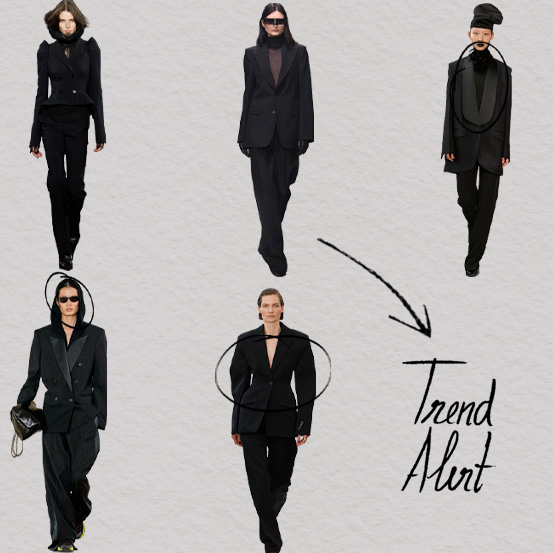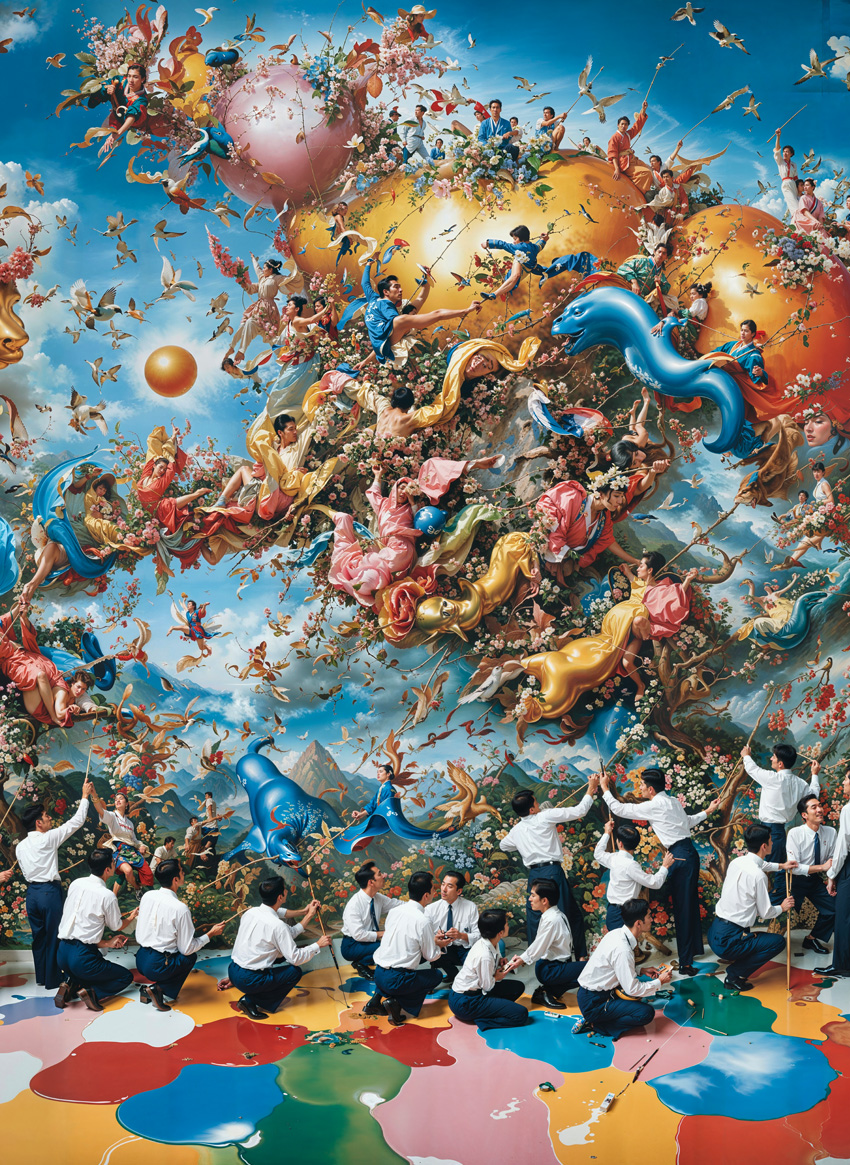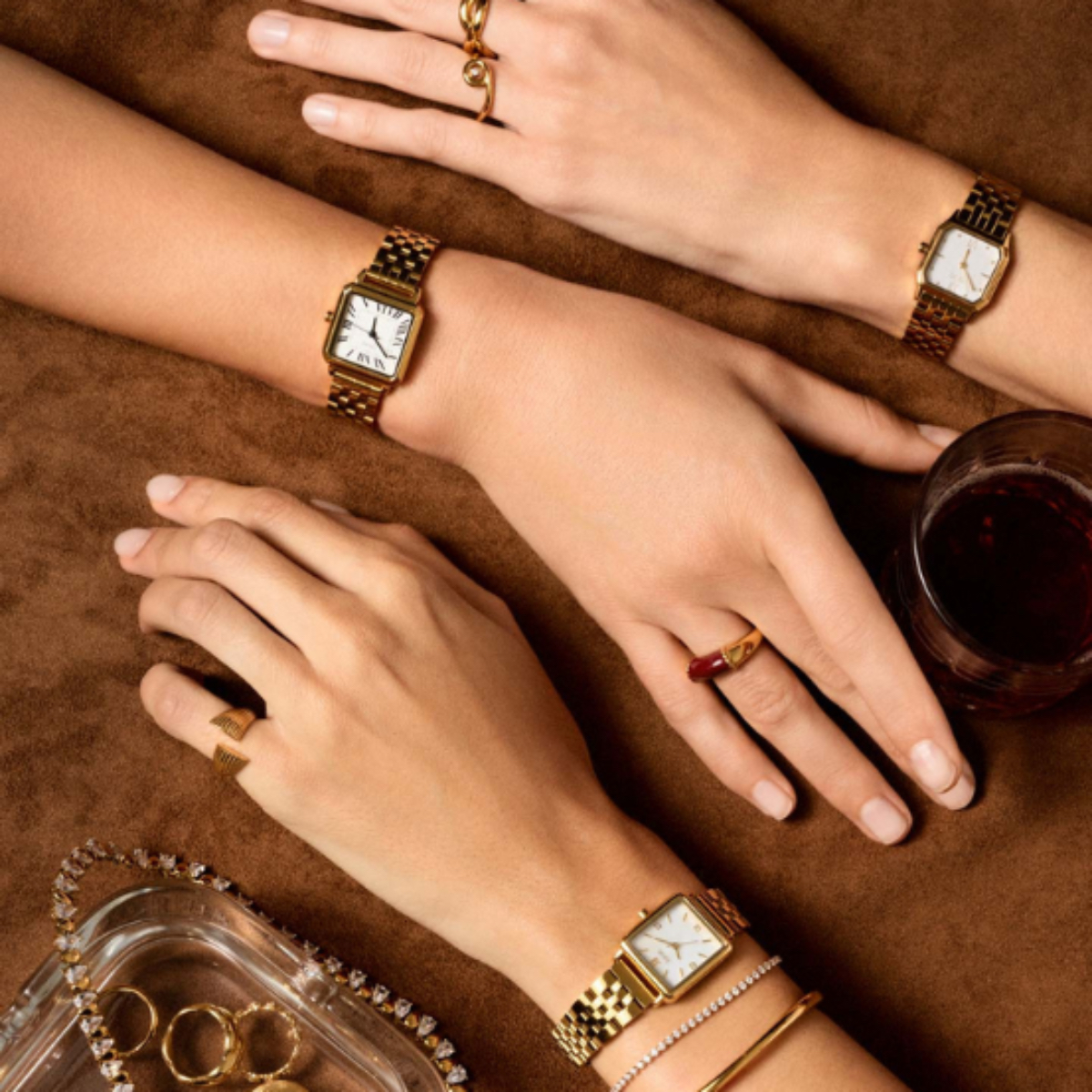Artwork: David Sheldrick
Are we in the presence of the next Frida Khalo without knowing it? As is the case with much that becomes iconic, sometimes it is the passing - or the end? - of time that decides to whom this status belongs.
In the dictionary, an icon is defined as "a person, fact or thing capable of evoking and representing a certain movement, period, activity, etc". Something that transcends time and becomes a landmark in culture and society. When someone is referred to as an icon, their presence is immediately recognisable and, although they are the product of a specific society - an icon also implies context - they become part of global knowledge. In whatever form, with the whole image or just a small detail, we can quickly establish a connection and identify it. Think, for example, of personalities such as David Bowie, Albert Einstein or even Cleopatra. With a simple detail that alludes to their identity - notice Bowie's lightning bolt, Einstein's hair and Cleopatra's make-up - you quickly recognise their identity regardless of their era, artistic discipline or origin. Icons therefore refer to a tiny percentage of personalities who have not only established themselves as ‘greats’ in their industry, but have also gone beyond that category and become somewhat ubiquitous figures.
In the Art world, the philosophy is similar. However, often what is considered iconic is a specific work or piece, rather than the artist themselves (for example, the painting Girl with a Pearl Earring has become a more iconic portrait than its creator; although the Dutch painter Vermeer is considered one of the leading names in Art, he doesn't reach iconic status like other colleagues in his profession). In this article, we are only considering the artist themselves as an icon: in Art, names such as Da Vinci, Picasso and Michelangelo not only stood out for their revered works, but also became renowned figures where their cultural presence endures to this day, consequently becoming recognised as icons. Regardless of their era, they became entities that transcended their lifetime and transformed the art history canon, defining new movements and ways of thinking. What made these artists unique was not only their exceptional mastery of the materials they used, but also their characteristic way of capturing a specific moment in time. By establishing themselves as the standard-bearers of their period, they developed the culture and artistic zeitgeist. Thus, this almost celestial status is achieved with the ability to develop and create a real and raw reflection of the society in which they are inserted. However, artists who emerge as icons not only provide a revealing portrait of their surroundings, but do so in a new and unique way. It's not just a question of reproducing artistic movements a priori, but rather of realising what is to come and exploring it in order to create something innovative and visionary. Over time, as their names become more and more immortalised in the history of art, an aura emerges around these figures, further consolidating them as cultural symbols. However, although their art mirrors the dignified experiences of their time, few artists receive the recognition they deserve while they are alive. And in some cases, it is after a life of hardship and rejection that they are later discovered and posthumously ‘(re)born’ as unavoidable figures of their time.
Take, for example, Vincent van Gogh (1853 - 1890), the Dutch painter and Art pioneer who, today, is among the most recognisable names not only in the Art world, but also in general culture. One of the main representatives of Post-Impressionism, his works - currently exhibited around the world in the most prestigious institutions - are easily recognised by their vibrant colours, together with the intense and robust brushstrokes that define the quintessence of a Van Gogh painting. Considered one of the sector's greatest icons, it was only after his death that the artist found such fame. While alive, he never achieved great recognition, dying in anonymity at the age of 37 by suicide, leaving behind a vast collection of works considered to be one of the greatest artistic legacies of contemporary humanity. American photographer Vivian Maier (1926 - 2009) suffered the same fate. After spending a banal life working as a nanny in Chicago for over 40 years, in her spare time the artist dedicated herself to capturing the social realities around her. In an impressive body of work that brings together more than 100,000 images, Maier portrayed the daily lives of various strangers on the streets of Chicago and New York, and she did so with spontaneity and a distinctive sensibility. Resulting in a series of silent testimonies of her experiences, her works reflect the complexity of human experience in a raw and naked way. However, it wasn't until 2007, when historian John Maloof discovered thousands of negatives, devices and printed photographs, as well as home videos and audio recordings, in two storage containers he had acquired, that the photographer's work was exposed to the public. Since then, Maier's work has been recognised by the art industry and exhibited in various galleries and museums around the world. Although the north American photographer has not become a cultural symbol (as is the case with Van Gogh), she is an example of how post-mortem exposure can take on a life of its own, providing new levels of recognition. In this sense, the question arises: did the death of these artists somehow alter the projection of their careers, catapulting them to the status of popularity and, in some cases, even of an icon? And if so, is it too early to describe an artist as an icon during their lifetime?
Curiosity about the unknown and the mystical is a common feeling among us. Death, as the inevitable fate of the human condition, occupies a central role in our thoughts and, when it occurs, tends to cause shock and dismay. On a global scale, the death of a renowned figure (including artists) not only has an impact but also attracts the attention of the public sphere, further increasing their level of recognition. Thus, when notoriety is combined with curiosity, it is sometimes inevitable that fame reaches new heights. However, there are still few names that go beyond recognition in their industry and transcend time, remaining as true icons. Although fame does not mean or equate to icon status, there is a certain parallel that can be drawn.
In a study by Paul Ingram and Mitali Banerjee entitled, Fame as an Illusion of Creativity: Evidence from the Pioneers of Abstract Art, the authors revealed that artists with a larger network of contacts are more likely to become famous, rather than through their creativity. Consequently, the wider and more diverse their relationships - including contacts from different disciplines and nationalities - the more likely they are to achieve success. Thus, artists don't become famous in a vacuum. Instead, they need to be mentored and have relationships with the right people, for example with an art critic or curator. In this way, does the attribution of icon status to an artist come down to the people who remain after their death? Family members, critics, curators, gallery owners, among others, who have dedicated themselves to exhibiting and propagating their work? In both cases discussed above, it was through the intervention of certain people - Theo and Jo Van Gogh, in the case of Van Gogh, and John Maloof, in the case of Vivian Maier - that these artists were able to survive over time and become known for their artistic work on a global level. As such, an artist's prestige comes from a set of various aspects that result in a recipe - which is almost accidental, but idyllic - that generates an icon, where their relationships are a key element in this achievement.
Unlike other areas, such as science or sport, in Art, which is a subjective field that is constantly evolving, it seems unattainable to reach a conclusion as contemporaries of artists at the time in question. Whereas in other areas it is possible to recognise and determine who will be remembered in the future - let's consider Simone Biles having reached unprecedented new heights in artistic gymnastics - Art, being subject to diverse opinions and underlying a qualitative scale that is not, in a way, standardised or standardisable, becomes unpredictable, remaining in continuous transformation. Furthermore, since his works are a reflection of an artist's life and experiences, would finding fame while alive change the essence of his Art and, consequently, his consecration as an icon? The scenarios are numerous and the answers are as multiple as they are inconclusive.
In the exercise of looking at the artistic panorama in which we find ourselves today, to what conclusions do we arrive? Can we attribute to someone, without a shadow of a doubt, the status of an icon in that field? There are certain artists with whom we simply identify and recognise their work; then there are others who we applaud enthusiastically. Who will survive in the public eye for generations and generations? In a set of opinions, whether positive or negative, the remaining figure responds to the impact they made while alive, but also to how society as a whole has treasured their memory after their death, in a kind of collaborative way. It's one of those questions where the answer ends up being: only time will tell. And in Art, perhaps the icon is already created, it just needs space and evolution - which will perhaps only manifest itself after their death - to be consecrated as a true artistic emblem. In turn, perhaps certain artists only become symbols after their lifetime for the same reason that makes them an icon: they are ahead of their time.
Originally translated from The Icons Issue, published November 2024. Full credits and stories are in the print issue.
Most popular

O que lhe reservam os astros para a semana de 30 de dezembro a 5 de janeiro
30 Dec 2025
.jpg)
.jpg)
Relacionados


O que lhe reservam os astros para a semana de 30 de dezembro a 5 de janeiro
30 Dec 2025



.jpg)
